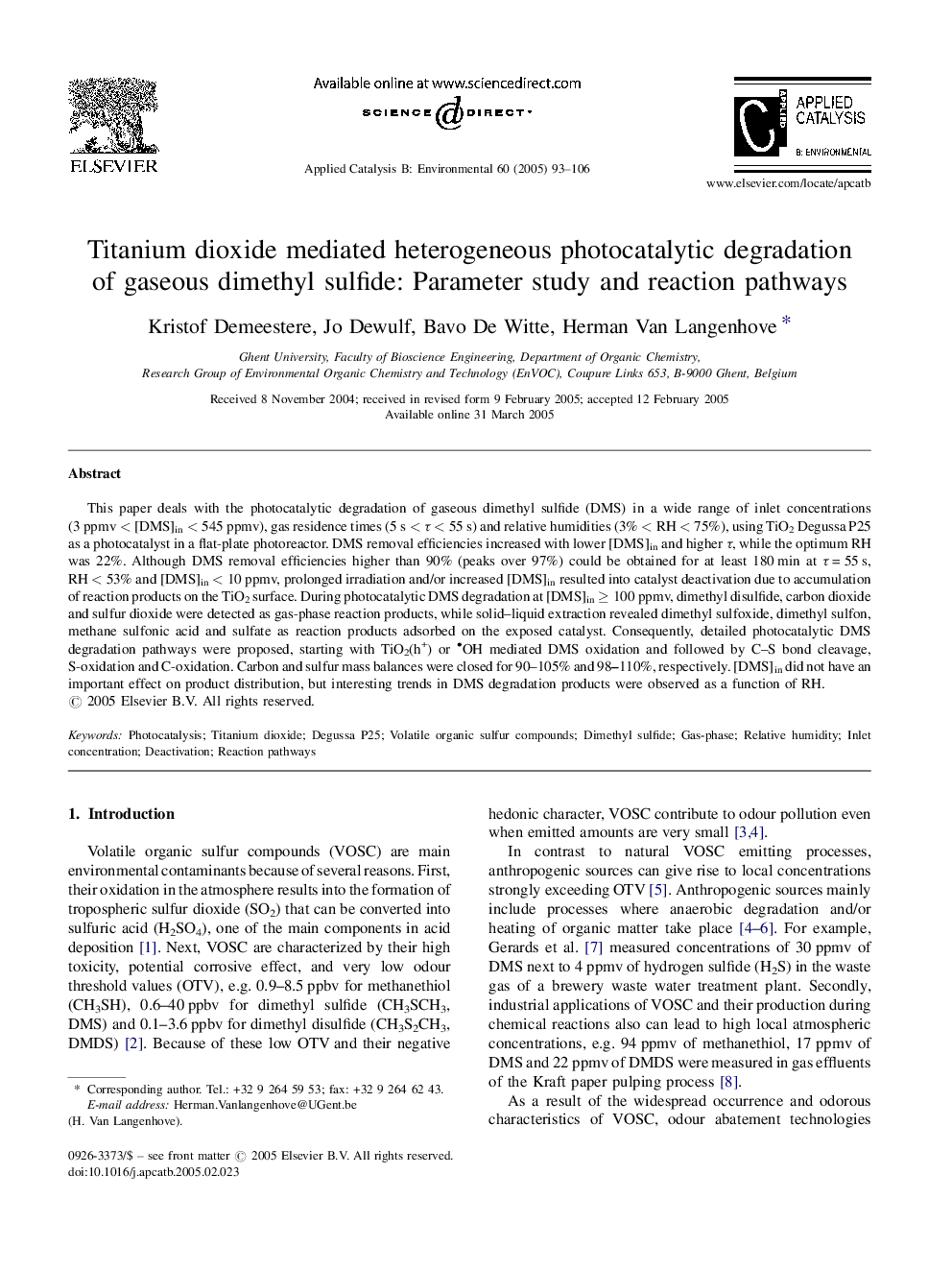| Article ID | Journal | Published Year | Pages | File Type |
|---|---|---|---|---|
| 9609829 | Applied Catalysis B: Environmental | 2005 | 14 Pages |
Abstract
This paper deals with the photocatalytic degradation of gaseous dimethyl sulfide (DMS) in a wide range of inlet concentrations (3 ppmv < [DMS]in < 545 ppmv), gas residence times (5 s < Ï < 55 s) and relative humidities (3% < RH < 75%), using TiO2 Degussa P25 as a photocatalyst in a flat-plate photoreactor. DMS removal efficiencies increased with lower [DMS]in and higher Ï, while the optimum RH was 22%. Although DMS removal efficiencies higher than 90% (peaks over 97%) could be obtained for at least 180 min at Ï = 55 s, RH < 53% and [DMS]in < 10 ppmv, prolonged irradiation and/or increased [DMS]in resulted into catalyst deactivation due to accumulation of reaction products on the TiO2 surface. During photocatalytic DMS degradation at [DMS]in â¥Â 100 ppmv, dimethyl disulfide, carbon dioxide and sulfur dioxide were detected as gas-phase reaction products, while solid-liquid extraction revealed dimethyl sulfoxide, dimethyl sulfon, methane sulfonic acid and sulfate as reaction products adsorbed on the exposed catalyst. Consequently, detailed photocatalytic DMS degradation pathways were proposed, starting with TiO2(h+) or OH mediated DMS oxidation and followed by CS bond cleavage, S-oxidation and C-oxidation. Carbon and sulfur mass balances were closed for 90-105% and 98-110%, respectively. [DMS]in did not have an important effect on product distribution, but interesting trends in DMS degradation products were observed as a function of RH.
Keywords
Related Topics
Physical Sciences and Engineering
Chemical Engineering
Catalysis
Authors
Kristof Demeestere, Jo Dewulf, Bavo De Witte, Herman Van Langenhove,
